Are you an adventurous fisherman looking for a new way to catch your dinner? Or you’re interested in trying a unique and traditional fishing method.
A Hawaiian sling is a simple yet effective tool used for spearfishing, combining traditional methods with modern ingenuity. It is a sling-powered spear launcher that allows for precision and efficiency while fishing underwater.
Building a Hawaiian sling requires only a few basic materials and tools, making it an accessible DIY project for beginners and experienced anglers. You can customize the design by crafting your own to suit your specific needs and preferences, enhancing your fishing experience.
This guide on how to build a hawaiian sling will walk you through the steps needed to create a reliable and functional Hawaiian sling.
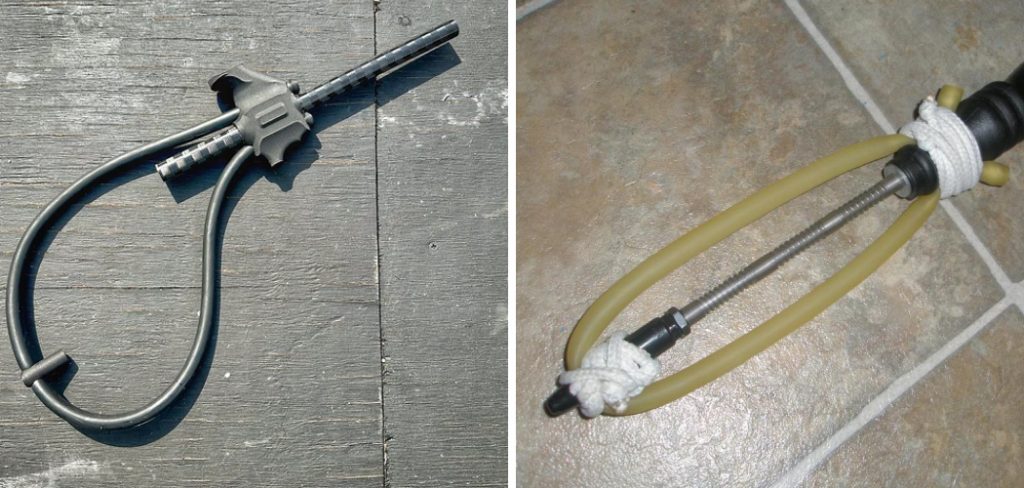
What Are the Benefits of Building Your Own Hawaiian Sling?
While you can easily purchase a ready-made Hawaiian sling from a store, building your own has several advantages:
- Cost-effective: Building your Hawaiian sling is much cheaper than buying one. You only need basic materials that are readily available and affordable. This makes it an ideal project for those on a budget or wanting to save money.
- Customizable Design: When you build your Hawaiian sling, you can customize its design according to your preferences. You can choose the length, shape, and material of the spear and the strength of the sling, making it uniquely yours.
- Knowledge and Skills Development: Building a Hawaiian sling is a great way to learn new skills and expand your knowledge about traditional fishing methods. You will also gain valuable experience crafting and using tools, making you a more well-rounded angler.
- Sustainable Fishing: Using a Hawaiian sling promotes sustainable fishing practices as it is a selective method that allows you to target specific fish without damaging the surrounding environment. By building your own, you are contributing to marine life conservation.
These are just a few benefits of building your own Hawaiian sling. Now, let’s get into the steps on how to make one.
What Will You Need?
Gather all the necessary materials and tools before you start building your Hawaiian sling. Here’s a list of what you’ll need:
- Spear: The spear is the most crucial part of the Hawaiian sling. You can purchase a ready-made one or make your own from a sturdy and lightweight material such as wood or fiberglass.
- Sling: The sling should be made from a strong yet flexible material like surgical tubing or rubber bands. It should be able to stretch at least two times its original length.
- Handle/Grip: The handle or grip is where you hold onto while using the Hawaiian sling. It should be comfortable to hold and provide a firm grip. Materials such as PVC pipes, wooden dowels, or bicycle handles can be used.
- String: The string attaches the sling to the spear and creates tension. You can use any strong and durable string like nylon or fishing line.
- Knife/Scissors: These are essential tools for cutting and shaping the materials used in building the Hawaiian sling.
Once you have all the materials and tools ready, it’s time to start building your Hawaiian sling.
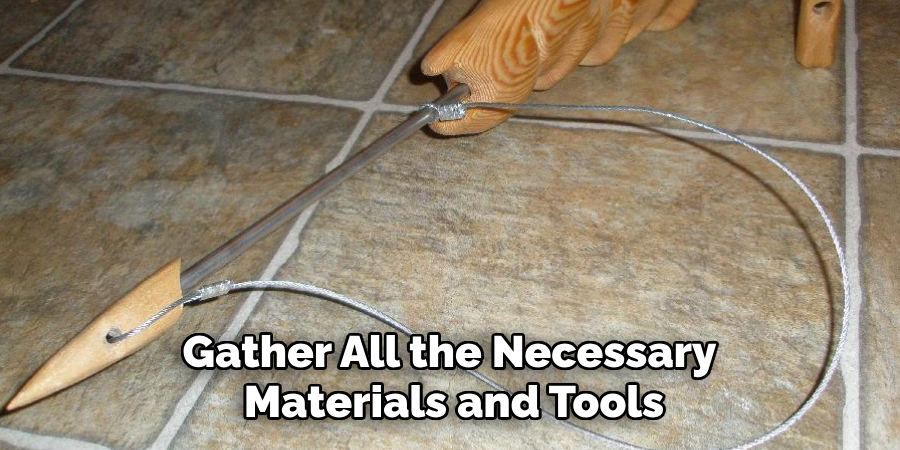
8 Easy Steps on How to Build a Hawaiian Sling
Step 1. Gather Your Materials:
Before you begin, make a checklist of all the necessary materials and tools. These include a sturdy handle, durable string, a spear or shaft, and tools like a knife or scissors for shaping and cutting. Ensuring everything is prepared beforehand will save time and make the process smoother. Organize your workspace to keep your materials within easy reach.
Step 2. Prepare the Spear
Start by selecting a spear shaft that is straight, lightweight, and sturdy. If you’re building your own spear, materials such as wooden dowels or fiberglass rods work well. Cut the shaft to your desired length, typically between 4 to 8 feet, depending on your preference and the type of fishing you’ll be doing.
Once the shaft is ready, sand it down to ensure it is smooth and free from splinters, providing a safe and streamlined finish. If required, attach a pointed tip to the spear. This can be done by either sharpening one end of the rod or attaching a metal or barbed spear tip, which can be purchased from a fishing supplies store. Ensure the tip is securely fastened, as it must withstand underwater use.
Step 3. Attach a Secure Grip
To maintain control and improve accuracy while using the spear, adding a secure grip to the shaft is essential. Wrap a section of the shaft where you will hold it with non-slip tape, rubber tubing, or a similar material. This provides a firm grip, even when your hands are wet. Ensure the grip is tightly secured and feels comfortable in your hand, as it will play a crucial role in your ability to handle the spear effectively during underwater fishing.
Step 4. Test and Fine-Tune the Spear
Before taking the spear underwater, test it in a controlled environment to ensure its functionality and durability. Check that the tip is securely attached, the shaft is straight, and the grip provides the necessary control.
Practice aiming and throwing the spear at a target to evaluate its balance and accuracy. If adjustments are needed, make them before heading into the water. A well-balanced and adequately tested spear will significantly improve your effectiveness and safety during underwater fishing.
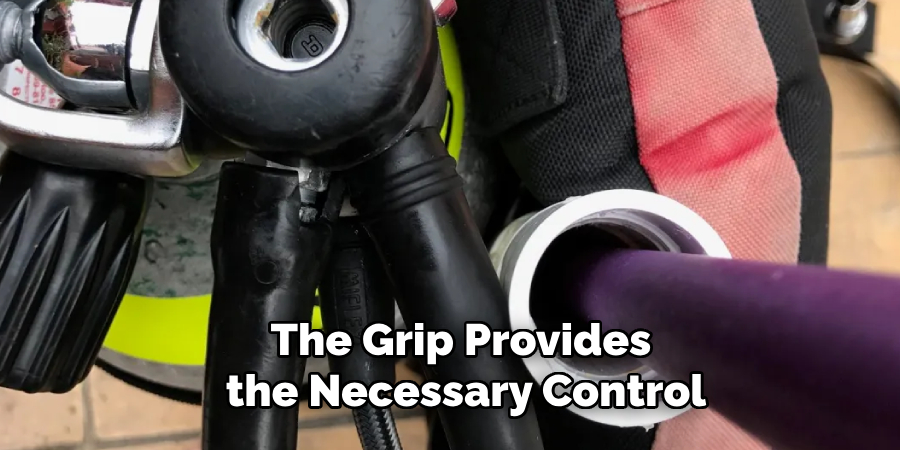
Step 5. Practice Safety Measures
Safety is paramount when engaging in underwater fishing. Always ensure you are familiar with the area you will be fishing, including its depth, currents, and potential hazards such as sharp rocks or marine life. Never go spearfishing alone; having a buddy ensures there is someone to assist in case of emergencies.
Use appropriate underwater gear, such as a wetsuit, snorkeling mask, fins, and a weight belt, to enhance mobility and protection. Additionally, observe local regulations regarding fishing zones and species to avoid legal or ecological issues. Adhering to safety protocols protects you and contributes to a more enjoyable and successful fishing experience.
Step 6. Master Your Spearfishing Techniques
To become proficient in underwater fishing, developing and refining your spearfishing techniques is essential. Begin by practicing your aim and learning to approach fish without startling them. Fish are susceptible to movement, so approach them slowly and calmly, using the underwater environment as cover.
Learn to control your breathing and improve your breath-hold capacity to stay underwater longer and focus better. Additionally, familiarize yourself with the behaviors and habits of your target fish species, as this knowledge can significantly increase your chances of success. Remember, patience and practice are key to mastering the art of spearfishing.
Step 7. Maintain and Care for Your Equipment
Proper maintenance of your spearfishing gear is vital to ensure its longevity and reliable performance. After every trip, rinse all equipment with fresh water to remove salt, sand, and debris that can cause corrosion or wear.
Inspect your speargun, wetsuit, fins, and mask for any damage, and repair or replace items as needed to avoid malfunctions during your next outing. Store your gear in a cool, dry place away from direct sunlight to prevent deterioration. Regular maintenance protects your investment and ensures your safety and effectiveness while spearfishing.
Step 8. Prioritize Safety at All Times
Safety should always be the top priority during any spearfishing activity. Make sure you never spearfish alone; having a buddy ensures emergency assistance. To avoid dangerous situations, Always be aware of your surroundings, including currents, underwater hazards, and marine life.
Adhere to local regulations, such as observing no-fishing zones and size limits, to fish responsibly. Most importantly, know your limits—do not push yourself to hold your breath longer than is comfortable or safe. Spearfishing is an exhilarating sport, but taking precautions ensures you can enjoy it responsibly for many years.
By following these steps and prioritizing safety, you can effectively learn and master the art of spearfishing.
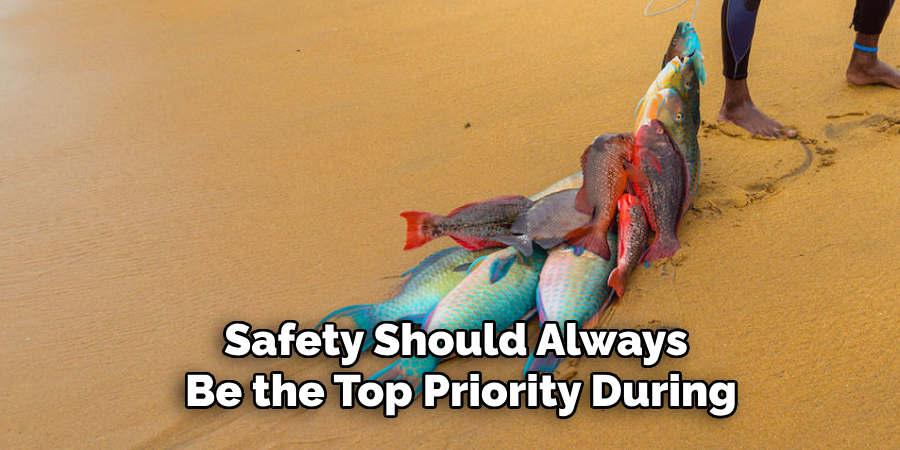
5 Things You Should Avoid
- Using Low-Quality Materials: Avoid using cheap or substandard materials for the sling’s components. Using poor-quality wood, rubber, or spear tips can result in a product that is unsafe, unreliable, or prone to breaking during use.
- Skipping Proper Measurements: Failing to measure components accurately can lead to a sling that is either uncomfortable to use or inefficient in performance. Always take precise measurements to ensure functionality and ease of use.
- Neglecting Safety Precautions: Never ignore safety when building a Hawaiian sling. Sharp tools, unprotected spear tips, or improper handling of materials can result in injuries. Use protective gear and follow safety guidelines.
- Ignoring Durability: Avoid designing a sling without considering its durability. Factors such as exposure to saltwater and frequent stress from use can quickly degrade poorly constructed slings. Opt for materials suitable for long-term, repeated use in aquatic environments.
- Forgoing Testing Before Use: Don’t skip testing the sling before using it in real conditions. A Hawaiian sling that hasn’t been tested for its accuracy, strength, and reliability may fail unexpectedly, potentially causing dangerous situations.
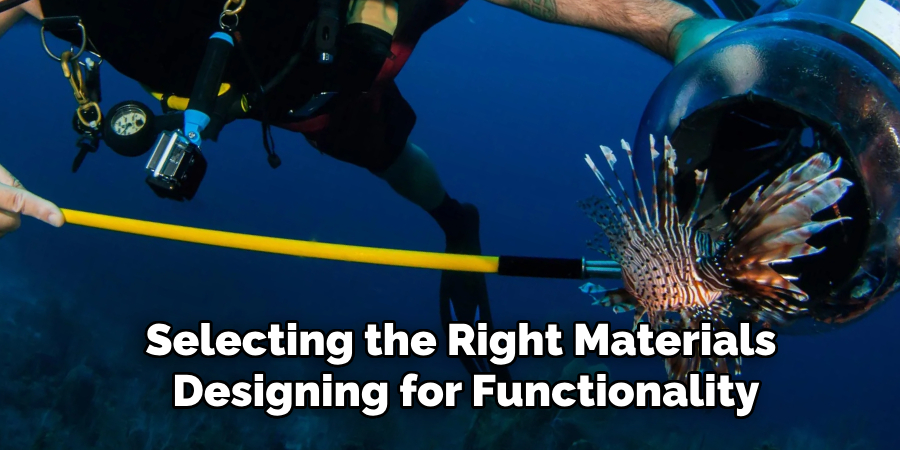
Conclusion
How to build a Hawaiian sling requires careful planning, attention to detail, and a commitment to safety.
By selecting the right materials, designing for functionality and durability, and adhering to safety protocols, you can create a compelling and reliable tool for spearfishing. Avoid common mistakes such as neglecting precise measurements or skipping testing, as these can compromise the sling’s performance.
With thorough preparation and craftsmanship, your Hawaiian sling will serve as a versatile and dependable piece of equipment for underwater adventures. Happy fishing!
About the Author
Jennifer Branett is the author of Fishy Kayak and an expert in fish-related fields, with over 10 years of experience. Her work blends passion for fishing with a commitment to conservation.
Educational Background
Degree: Bachelor’s in Marine Biology
Institution: University of California, Santa Barbara
Specializations: Aquatic ecosystems, fish behavior, and sustainable practices
Professional Experience
Conservation Projects:
Collaborated with local organizations to restore aquatic habitats
Developed educational programs on sustainable fishing practices
Publications:
Authored articles for fishing magazines and environmental journals
Featured speaker at fishing expos and conservation conferences
Key Areas of Expertise
Fishing Techniques:
Kayak fishing strategies
Freshwater and saltwater fishing methods
Environmental Stewardship:
Advocacy for sustainable fishing
Promoting biodiversity in aquatic environments
Awards and Recognition
Recipient of the [Specific Award Name] for contributions to marine conservation
Recognized as a leading voice in the fishing community by [Organization/Publication Name]
Community Engagement
Workshops and Seminars:
Regularly hosts events to educate anglers on sustainable practices
Engages with youth programs to inspire the next generation of fishers
Online Presence:
Maintains an active blog sharing tips, stories, and conservation efforts
Engages with followers on social media to promote fishing ethics
Personal Interests
Enjoys kayaking in scenic locations
Passionate about photography, capturing the beauty of nature
Advocates for local conservation efforts in her community
